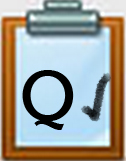QM4 Microsoft Word: Graphics Tools Step 1
IMAGE EXPLORATION ACTIVITIES
1. Learn and practice some image editing skills.
a. Open this 4.QM4 Image Exploration Document and download it as a Microsoft Word doc to open and edit (unless using a Google account, where you make a copy).
b. Play and pause the 4.QM4 Graphics with Word (3:48 min.) video embedded and linked below.
Activity 1:
- Open your Robert Frost Poem Document in another window so that you see both documents side by side.
- Try each action that was demonstrated in the video (that is also listed on your Exploration Document). Check off features as completed.
- Additional features are shown by opening it in the Desktop app version if you are using it.
c. Check with your teacher about submitting the edited poem document.
Direct link (3:48 min.)
2. Activity 2 is located in your Q4 Image Exploration Doc. You will create a hyperlink from that document to his webpage.
- Play the How to Insert a Hyperlink video below.
- How many ways can you think of where this skill is helpful? Can you think of some not on this list?
- Quickly add a link to a document to find favorite websites.
- Link to additional resources when doing some research.
- To help return to a part of a page or site when using a screen reader.
- Continue to the Step 2 page.
How to Insert a Hyperlink into a Word Document
Direct link (1:29 min.)
Competencies & Standards
MITECS Michigan Integrated Technology Competencies for Students, and
1. Empowered Learner
c. Use technology to seek feedback that informs and improves their practice and to demonstrate their learning in a variety of ways
d. Understand the fundamental concepts of technology operations, demonstrate the ability to choose, use and troubleshoot current technologies and are able to transfer their knowledge to explore emerging technologies
2. Digital Citizen
c. Demonstrate an understanding of and respect for the rights and obligations of using and sharing intellectual property
3. Knowledge Constructor
a. Plan and employ effective research strategies to locate information and other resources for their intellectual or creative pursuits
c. Curate information from digital resources using a variety of tools and methods to create collections of artifacts that demonstrate meaningful connections or conclusions
6. Creative Communicator
a. Choose the appropriate platforms and tools for meeting the desired objectives of their creation or communication
b. Create original works or responsibly repurpose or remix digital resources into their new creations
d. Publish or present content that customizes the message and medium for their intended audiences
Websites and Documents
Websites
- Creative Commons Image Search
- Freepik.com
- libguides from Brown University
- Microsoft ClipArt Collection
- Photos for Class (safe images with citations)
- Pics4Learning
Videos from Outside Sources
- How to Correctly Use Google Images for Your Projects YouTube (4:02)
- How To Insert A Hyperlink In Microsoft Word YouTube (1:29)
21t4s Videos
21t4s Documents & Quizzes




